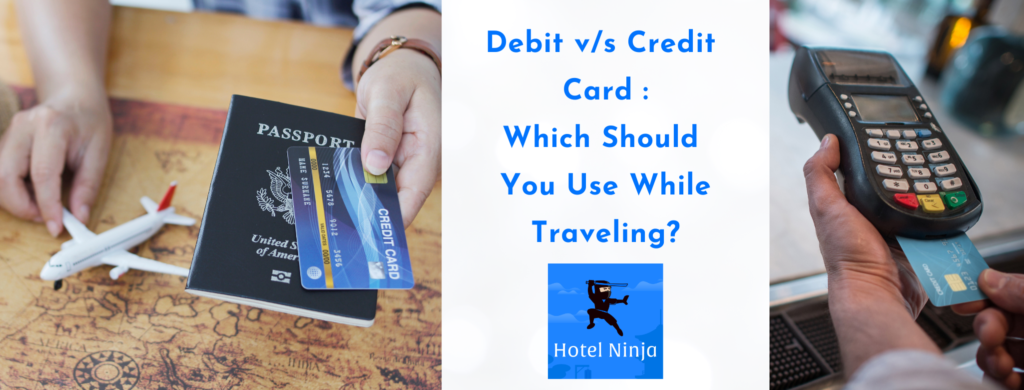
When you’re traveling, deciding between using a debit card or a credit card can depend on your personal preferences, financial situation, and how you plan to manage your travel expenses. Both have their own set of benefits and downsides, so let’s break it down.
Should You Use a Debit or Credit Card for International Travel?
Each option has its perks and drawbacks, and the best choice depends on your needs. Here’s a quick rundown of what you can expect from each.

Debit Cards
Pros
- Helps you avoid overspending since you’re limited to the balance in your account.
- No interest charges since you’re spending your own money.
- Convenient access to cash through ATMs, ideal for small purchases, tips, or places where credit cards aren’t widely accepted.
- Often, you get favorable interbank exchange rates compared to typical currency exchanges.
- Accepted worldwide, especially for everyday purchases.
Cons
- Limited fraud protection; if fraud occurs, it may take time to get your money back.
- Potential currency conversion fees depend on the bank.
- Vendors may place temporary holds on funds, reducing your available balance.
- Risk of overdrafting, which could lead to unwanted fees.
Credit Cards
Pros
- Strong fraud protection, offering better security while traveling.
- Potential for rewards, cashback, or travel benefits like insurance—perfect for offsetting trip expenses.
- Great for emergencies or unexpected costs.
- Helps boost your credit score when used responsibly.
- Typically offers good currency conversion rates.
Cons
- Interest charges if you don’t pay the full balance each month.
- Easier to overspend since repayment is delayed.
- Some cards add foreign transaction fees, eating into your travel budget.
- While widely accepted, not all places—especially in remote areas—accept credit cards or all types.
Choosing the Right Credit Card for Your Travels

If you’re leaning toward a credit card for your trip, it’s essential to pick the right one. Here’s what to look for:
- No Foreign Transaction Fees: These fees can accumulate quickly, so try to avoid them.
- Competitive Currency Conversion Rates: Get the most value when converting your home currency.
- Chip-and-PIN Capability: Widely accepted in Europe, these can make transactions smoother. Many countries no longer accept non-chip-and-pin cards.
- Travel Rewards and Perks: Whether it’s miles, points, or cashback, these can reduce your travel costs.
- ATM Access: Check if your card allows for fee-free withdrawals abroad, which is handy when you need cash.
- Annual Fees: Some travel cards have fees; weigh the cost against the benefits.
- Cardholder Reviews: Look at what other travelers say about the card you’re considering.
- Spending Habits: Pick a card that fits how you typically spend money while traveling.
- Read the Fine Print: Always check for restrictions, blackout dates, or travel benefits details.
- Check your Destination Country: Some only accept Visa or Mastercard, while others mostly use only one of the two. Diners and American Express are not widely accepted.
The best credit card for international travel depends on your unique needs and preferences. Research thoroughly, compare cards, and select one that aligns with your travel style while minimizing fees.
Before You Leave
- Let your card issuer know about your travel plans to avoid blocked transactions or security holds.
- Carry a backup card just in case your primary card gets lost, stolen, or doesn’t work.
- Bring some local currency for areas where cards aren’t accepted.
- Protect your card with an RFID-blocking device for extra security.
To make your travels even smoother, don’t forget to download the Hotel Ninja Chrome Extension. With Hotel Ninja, you can easily book hotels at the best available rates online.


